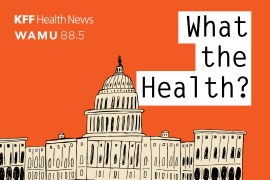The One-Paragraph Letter That Helped Shape The Opioid Epidemic
A letter, published in a 1980 edition of the New England Journal of Medicine, has been twisted and misrepresented by the makers of painkillers to prove their products are not addictive. In other news, researchers look at why treating opioid addiction can be complicated and the American Medical Association backs supervised injection sites.
NPR:
Sloppy Citations Of 1980 Letter Led To Opioid Epidemic, Researchers Say
A one-paragraph letter, barely a hundred words long, unwittingly became a major contributor to today's opioid crisis, researchers say. "This has recently been a matter of a lot of angst for me," Dr. Hershel Jick, co-author of that letter, told Morning Edition host David Greene recently. "We have published nearly 400 papers on drug safety, but never before have we had one that got into such a bizarre and unhealthy situation." (Haney and Hsu, 6/16)
Stat:
One Reason It's So Hard To Treat Opioid Addiction
Cases of hepatitis C have skyrocketed as the opioid epidemic has spread: There were an estimated 30,500 new cases in the U.S. in 2014, nearly double the number of new cases in 2011. Most of those new cases are among people who inject drugs such as heroin. Hepatitis C infections have increased particularly sharply among young people who live in rural areas of Appalachian states, according to the Centers for Disease Control and Prevention. (Thielking, 6/19)
WBUR:
AMA Endorses Trying Supervised Injection Facilities
The largest body of physicians in the U.S. is backing one of the most controversial proposals for curbing the country's opioid epidemic: supervised injection facilities. The American Medical Association (AMA) says these rooms, staffed by medical personnel who monitor drug users, lead to fewer overdose deaths, less transmission of infectious disease and promote treatment. (Bebinger, 6/16)
Kaiser Health News:
A ‘Safe’ Space To Shoot Up: Worth A Try In California?
Tawny Biggs’ seemingly happy childhood in the northern Los Angeles County suburb of Santa Clarita, Calif., showed no outward sign that she would one day struggle with drug addiction. As Biggs tells it, she was raised with two siblings “in a very good family” by an assistant fire-chief dad and a stay-at-home mom. Her after-school hours were filled with hockey and soccer. (O'Neill, 6/19)
And in the states —
Los Angeles Times:
California Atty. Gen. Xavier Becerra Announces Probe Of Drugmakers Over Epidemic Of Opioid Deaths
Citing an epidemic of opioid overdose deaths across the country, state Atty. Gen. Xavier Becerra said Friday that California is joining with more than 26 other states to investigate whether drugmakers have used illegal marketing and sales practices. Becerra said the probe would focus on whether drug manufacturers have played a role in creating or extending the opioid problem. (McGreevy, 6/16)
Los Angeles Times:
L.A. Sheriff's Deputies To Carry Nasal Spray To Treat Opioid Overdose Victims
The Los Angeles County Sheriff’s Department will supply thousands of field deputies with the nasal anti-opioid spray naloxone to help prevent overdose-related deaths, officials announced Thursday. Next week, the department will begin issuing more than 1,200 single-dose spray dispensers — sold under the brand name Narcan — to field deputies in Santa Clarita, Crescenta Valley,and East Los Angeles, as well as to deputies patrolling community colleges and parks. (Bernhard, 6/15)
The Baltimore Sun:
Baltimore City Running Low On Opioid Overdose Remedy
Baltimore health officials are running low on naloxone, the opioid overdose reversal drug used hundreds of times by bystanders in the last couple of years to save lives. Dr. Leana Wen, the city health commissioner, said demand has jumped significantly along with the drug epidemic and the health department needs funding for more supplies...The city has about 4,000 doses left to last until next May. The department will distribute them, two at a time, to residents, including IV drug users encountered by the city's needle exchange vans or by outreach workers in "hotspots," areas where a spate of overdoses recently occurred. (Cohn, 6/18)
The Washington Post:
Mom’s Grief Spurs NY Bill Targeting Opioid Dealers In Deaths
Four years after Patty Farrell found her 18-year-old daughter lying cold and blue in bed from an overdose, the former police detective hopes to see heroin dealers charged with homicide when their product kills. “She was the love of my life, my only child,” says Farrell, whose home is like a shrine to her daughter with photos and keepsakes everywhere. “When I lost her, I lost my world.” (Esch and Klepper, 6/18)






